Japanese Lanterns Produce Light as Well
By Denis Plamondon
Photos by Sandra D’Sylva & Denis Plamondon
*
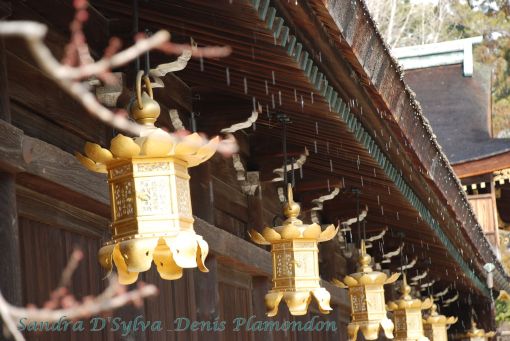
Kitano Tenmangu Shrine, golden lanterns under the rain
*
What image pops up in your mind when someone mentions a lantern in Japan? If you pass by a yakitori restaurant and the smell of grilled meat begins to tease your senses, you might think of a red paper lamp in front? The same lantern also indicates the location of an Izakaya (Japanese bar). When hundreds are aligned in the trees along a path, you may be looking forward to joining a festival around the corner? Or the sight of another white paper lamp in a doorway could suggest that night is approaching? In fact, very few of us will think of a Japanese lantern as solely decorative.
*
*
In your search of knowledge and quest for meanings while visiting Japanese temples and gardens, you will come to discover a wide variety of lamps and lanterns. Style, shape, material, color and location are aspects to consider in evaluating these beautiful objects. They are mostly made of stone (ishi-doro) and paper (chochin or bon-bori), and many adorn Japanese characters (chochin-moji). You will also find them in bronze, metal, wood and a combination of materials. According to its locality, a paper lantern will also bear a particular crest – indicating a mountain temple for example.
*
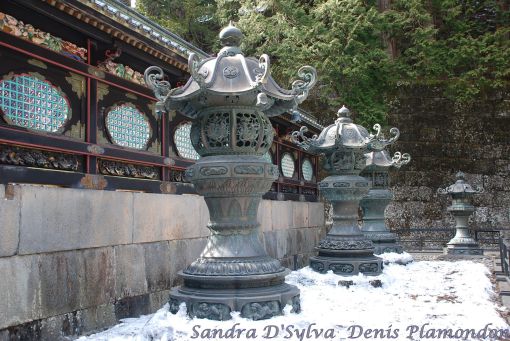
Magnificent bronze lanterns at the Sacred Taiyuin Temple in Nikko
*
Lamps and Lanterns in Japan Have a Long History
.
The origin of the lantern is attributed to China and was introduced to Japan by Korean monks in the 6th century along with Buddhism. There are many questions as to why Buddhism, a religion with no god, was so rapidly adopted by the Japanese whose animist religion (Shintoïsm) depicts many gods. Buddhism was able to give answers as to what to do when a person is deceased. The recitation of sutras and the ‘enlightening of souls’, symbolized by lanterns, gave the Japanese another understanding of the spirits they fear so intensively.
*
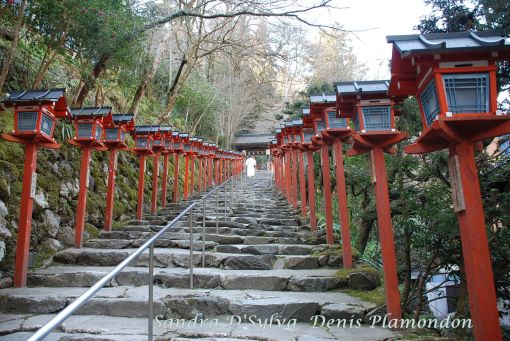
Wooden lanterns on the way to a shrine in the beautiful village of Kibune, northern mountains of Kyoto
*

Lanterns attached to a float during Gion Matsuri in Kyoto
*
For a very long time, lanterns were only seen at temples as a part of ceremonies, with the intention of illuminating souls. In this manner, offering light is a spiritual gesture and carries profound meaning while transcending the physical notion of light per se. During the long history of Japanese Buddhism, giving a lantern to a temple was a recurrent and popular gesture among warlords and daimyos. Some authors and historians have suggested that they did so due to fear that the spirits of victims they’d killed would return; thus, a stone lantern was a good insurance policy to calm the anger of evil spirits, which could be reminiscent of a strange fusion between Shinto and Buddhist practices and beliefs (I will post an article on this matter later.) Whatever may have been their intentions, warlords have donated a phenomenal quantity of stone and bronze lanterns to temples and shrines all over Japan. Consequently, it has given many artists a chance for expression and communication of an important heritage to younger generations.
*

Bronze lanterns in Nigatsu-Do in the Todai-Ji Complex in Nara
*
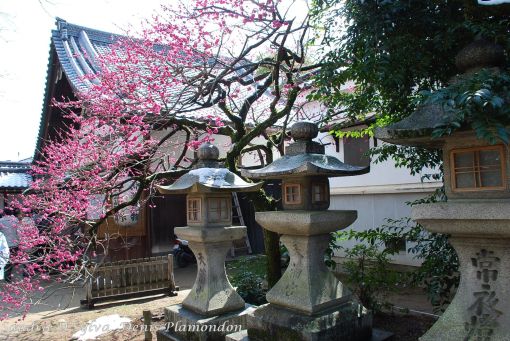
Stone lanterns at Kitano Tenmangu Shrine in Kyoto during Ume Festival
*
During the Azuchi-Momoyama period (1568-1600), a famous great tea master, Sen-no-Rikyu, started to assimilate stone lanterns in gardens as a way to “provide illumination for an evening tea ceremony”. This new direction was decisive and one can still see these vestiges very much sculptured in the overall landscape surrounding temples. Nowadays, stone lanterns are part of the Japanese garden design and well integrated among other features; in such an environment, their functionality is purely aesthetic. The perception of their beauty gives “light”. Conversely, lanterns and paper lamps in temples and shrines are still lit with actual fire or electricity. There are numerous festivals across Japan where visitors are invited at dusk to enjoy the splendor of their illumination. The Obon Matsuri is one of them (Visit the beautiful photo album of Gino T. Manalastas). Furthermore, in the surroundings of Kasuga Grand Shrine in Nara, more than 2000 stone lanterns are lit twice a year (February and August).
*
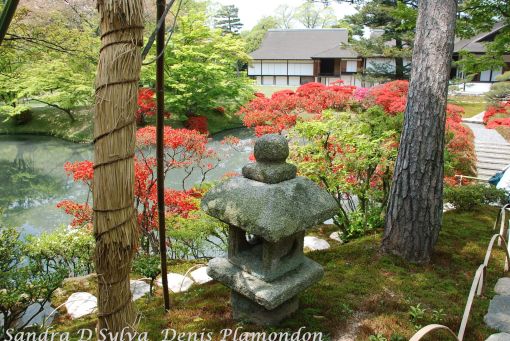
Stone lantern in Katsura Garden, Imperial Villa near Kyoto
*
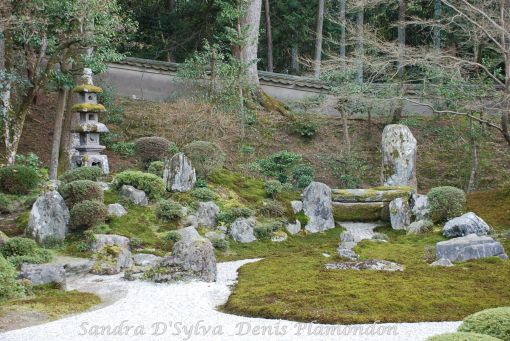
Stone lantern perfectly integrated in the garden of Manshu-In, Kyoto
*

Stone lantern in Shugaku-In Imperial Villa in Kyoto
*
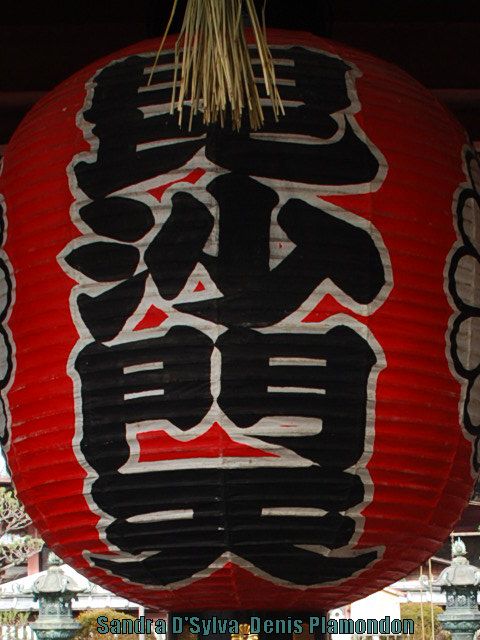
Enormous paper lantern in Yamashina; bronze lanterns in the lower background
*

Paper lantern in Kitano Tenmangu Shrine in Kyoto
*
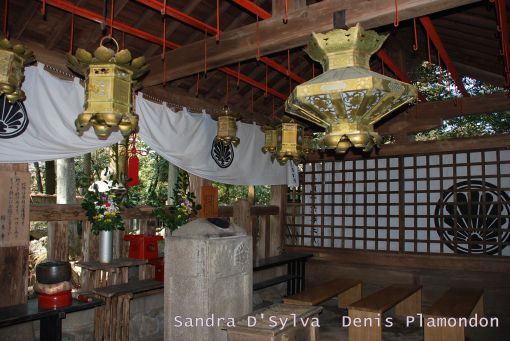
Golden lanterns in a small mountain temple between Kurama & Kibune, near Kyoto
*
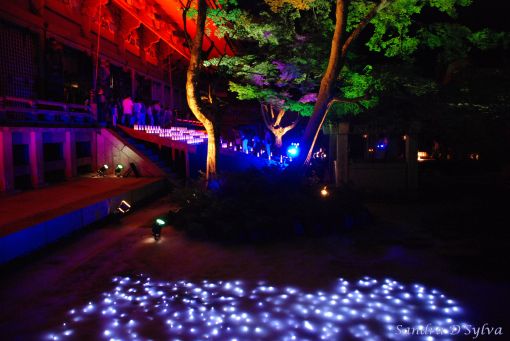
A choreography of lights during Obon Matsuri on Mount Hiei, Kyoto
*
To learn more about the stone lantern and especially about the 2000 units around Kasuga Grand Shrine in Nara. To learn about the art f the Japanese gardens and the variety of stone lanterns More on the Buddhist Gardens with this links.*
I would appreciate your comments. Click on comment link at the beginning of this article
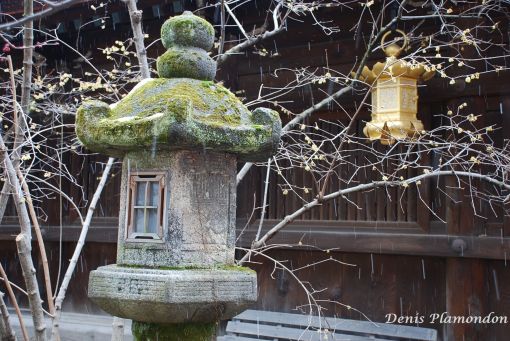

June 23, 2009 at 16:34
п»ї
Great page. Good stuff.
November 12, 2009 at 13:37
Japan…..,i love you…..
August 27, 2010 at 00:00
[…] I was trying to find a picture of Moji to put in but got side tracked by a lovely photograph of lanterns – I am a lantern person! So instead of going all geographical, here’s a link to a beautiful wordpress site which will leave better images in our minds than air raids: https://denisevents.wordpress.com/2009/06/04/japanese-lanterns-produce-light-as-well/ […]
October 6, 2011 at 03:56
Death Note Episodes…
[…]Japanese lanterns produce light as well « DenisEvents[…]…
October 30, 2011 at 17:35
Decorative…
[…]Japanese lanterns produce light as well « DenisEvents[…]…
May 28, 2013 at 14:16
Good site you have here.. It’s hard to find quality writing like yours nowadays. I seriously appreciate individuals like you! Take care!!
December 17, 2013 at 12:09
どもありがとうございまつ!